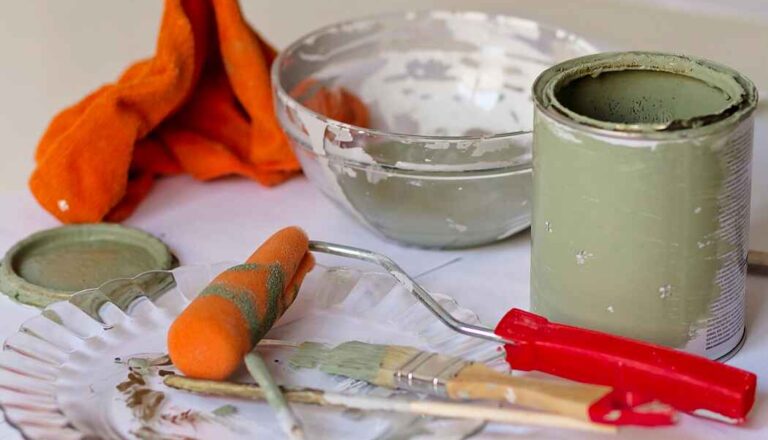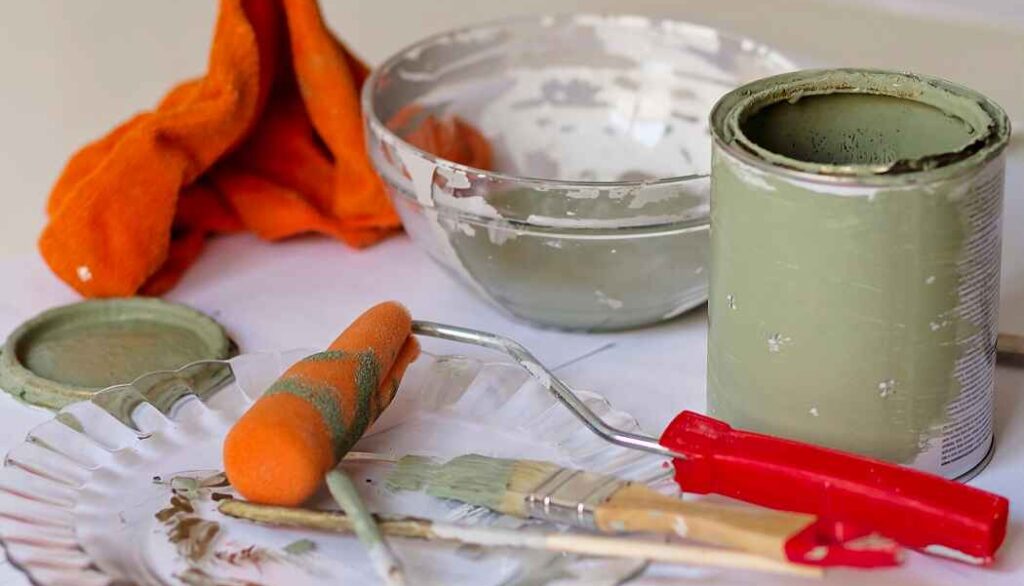
Why Is My Chalk Paint Cracking?
Chalk paint can crack due to several reasons, including applying it too thickly, using an incompatible surface or paint underneath, not allowing proper drying time, or environmental factors.

Are you frustrated by the cracking of your chalk paint? Don’t worry. In this comprehensive guide, we’ll explore the reasons behind why chalk paint cracks, helping you understand and troubleshoot this common issue.
Let’s unlock the mystery of chalk paint cracking together!
Why Is My Chalk Paint Cracking?
There can be several reasons why your chalk paint is cracking. Here are some possible explanations:
Inadequate surface preparation: Proper surface preparation is essential for ensuring optimal adhesion of chalk paint. When the surface is not thoroughly sanded, cleaned, or primed, the paint may struggle to adhere effectively. It leads to potential cracking issues as time goes on.
Insufficient drying time between coats: Chalk paint typically dries quickly, but it still needs sufficient time to cure between coats. If you apply subsequent coats of paint before the previous one has dried completely, the layers may not bond properly, leading to cracking.
Application of thick layers: Applying excessively thick layers of chalk paint can result in cracking. When thick layers dry, they tend to shrink and create tension on the surface, causing cracks to form.
Extreme temperature or humidity changes: Fluctuations in temperature and humidity can impact the drying process of chalk paint. If the paint dries too quickly or too slowly due to these environmental factors, it can lead to cracking.
Low-quality or expired paint: The quality of the paint you’re using can also affect its performance. Low-quality or expired chalk paint may not have the proper composition or consistency, leading to cracking issues.
Incompatible or incorrect surface materials: Chalk paint may not adhere well to certain surfaces or materials, such as laminate or shiny finishes. If you apply chalk paint to an incompatible surface without proper preparation or priming, it can result in cracking.
Inadequate sealing or topcoat: Chalk paint generally requires a protective topcoat or sealer to enhance durability and prevent cracking. If you skip this step or use an inappropriate sealer, the paint may be more susceptible to cracking.
Movement or flexing of the painted surface: If the painted surface experiences frequent movement or flexing, such as on furniture joints or wooden doors, it can cause stress on the paint layer, leading to cracking over time.
Why Is My Chalk Paint Cracking When It Dries?
The primary culprit behind this conundrum lies within the composition of the paint itself. Chalk paint is typically crafted by combining pigments, calcium carbonate (also known as chalk), water, and a binder, such as acrylic. During the drying process, water gradually evaporates, causing the paint to solidify and adhere to the surface. However, should the delicate balance of these components be disrupted, cracks may emerge as a distressing consequence.
Another possible cause of cracking is an excessive application of the paint. If the paint is applied over a sealed or non-porous surface, it lacks the necessary grip to firmly adhere, which can also contribute to cracking.
Another plausible culprit resides within the environmental realm. Temperature and humidity play a pivotal role in the paint’s drying process. If conditions are too chilly or excessively humid, the water content in the paint may evaporate at an uneven rate. It can cause the surface to contract prematurely and form unsightly crevices.
Furthermore, the passage of time may be a contributing factor. Overly aged or expired chalk paint can lose its effectiveness, resulting in compromised binding properties. As a result, the paint’s ability to maintain its integrity while drying diminishes, making cracks a more probable outcome.
How to Fix Chalk Paint Cracking?
If you’re experiencing cracking with your chalk paint, there are several steps you can take to address the issue. Follow these detailed instructions to fix chalk paint cracking:
Identify the cause: Before proceeding with any fixes, it’s crucial to determine the underlying cause of the cracking. Several factors can contribute to this issue, including improper surface preparation, incorrect paint application techniques, or environmental conditions.
Evaluate the surface: Inspect the painted surface to assess the severity of the cracking. If the cracks are small and superficial, you may be able to fix them without stripping the entire piece. However, if the cracking is extensive or deep, it might be necessary to remove the existing paint and start fresh.
Remove the cracked paint (if necessary): If the cracking is severe or widespread, you’ll need to strip the existing paint before proceeding. Use a paint stripper or sandpaper to remove the cracked paint layers until you reach a stable base.
Clean the surface: Once the paint is removed, clean the surface thoroughly to eliminate any dust, dirt, or residue. Use a mild detergent and water solution, and wipe it down with a clean cloth. Allow the surface to dry completely before proceeding.
Sand the surface: Lightly sand the entire surface with fine-grit sandpaper (around 220-320 grit). This step helps create a smooth and porous surface for the new paint to adhere to. Sanding also helps remove any remaining paint or imperfections that may have been missed during the stripping process.
Prime the surface (if needed): Depending on the type of surface and the paint you’re using, it may be necessary to apply a primer before painting. This step ensures proper adhesion and helps prevent future cracking. Choose a primer that is compatible with chalk paint and follow the manufacturer’s instructions for application.
Apply a new coat of chalk paint: Once the surface is properly prepared, apply a fresh coat of chalk paint. Make sure to use a high-quality chalk paint that is suitable for your project. Follow the manufacturer’s instructions regarding drying time and the number of recommended coats.
Apply thin coats: When applying the chalk paint, avoid heavy or thick coats, as they can lead to cracking. Instead, apply thin and even coats, allowing each coat to dry completely before adding another layer. Multiple thin coats are better than a single heavy coat.
Sand between coats (optional): For an extra smooth finish, you can lightly sand the surface between coats of chalk paint. Use a fine-grit sandpaper and gently sand the dried paint to create a smooth surface. Wipe away any dust before applying the next coat.
Seal the paint: Once you are satisfied with the coverage and finish of the chalk paint, consider sealing it with a clear wax or a water-based polyurethane. This protective layer helps prevent future cracking and adds durability to the painted surface. Follow the manufacturer’s instructions for applying the sealer and allow it to cure properly.
By following these detailed steps, you should be able to fix chalk paint cracking and achieve a smooth and flawless finish on your project. Remember to take your time, be patient, and ensure proper surface preparation and paint application for the best results.
Final Thoughts
By taking these precautions and implementing the techniques we discussed, you can significantly minimize the chances of encountering cracking issues in your chalk paint projects. With attention to detail and a thorough understanding of the process, you’ll be well on your way to achieving crack-free finishes that will stand the test of time.
